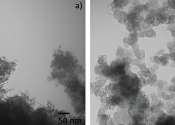Hundreds opposed changes to rooftop solar credits in Idaho: It was approved anyway
Changes have arrived to rooftop solar in Idaho, whether its proponents like it or not.
Jan 3, 2024
0
5
Energy & Green Tech

Changes have arrived to rooftop solar in Idaho, whether its proponents like it or not.
Jan 3, 2024
0
5
Engineering

Li-fi, a communication technology harnessing visible light for data transmission, has a potential to surpass Wi-Fi's speed by more than 100 times and boasts a high bandwidth, facilitating the simultaneous transmission of ...
Dec 29, 2023
1
46
Engineering

Lights could soon use the full color suite of perfectly efficient organic light-emitting diodes, or OLEDs, that last tens of thousands of hours, thanks to an innovation from physicists and engineers at the University of Michigan.
Dec 21, 2023
0
34
Electronics & Semiconductors

Neuromorphic vision sensors are unique sensing devices that automatically respond to environmental changes, such as a different brightness in their surrounding environment. These sensors mimic the functioning of the human ...
Engineering

A research team KAIST from led by Professor Keon Jae Lee has demonstrated the transfer printing of a large number of micro-sized inorganic semiconductor chips via the selective modulation of micro-vacuum force. The research, ...
Dec 19, 2023
0
41
Business

Chicago's James R. Thompson Center will undergo a floor-by-floor gut rehab beginning early next year, but the building will retain its atrium while also opening up the base of the structure to retail, according to renderings ...
Dec 14, 2023
0
6
Energy & Green Tech

A team of advanced materials chemistry researchers have made a significant breakthrough in the use of light to convert carbon and carbon dioxide (CO2) into carbon monoxide (CO).
Dec 12, 2023
0
78
Engineering

Scientists at the University of Illinois Urbana-Champaign have developed a portable, self-powered ultraviolet-C device called the Tribo-sanitizer that can inactivate two of the bacteria responsible for many foodborne illnesses ...
Dec 5, 2023
0
40
Security

Artificial intelligence tools hold promise for applications ranging from autonomous vehicles to the interpretation of medical images. However, a new study finds these AI tools are more vulnerable than previously thought to ...
Dec 4, 2023
0
48
Energy & Green Tech

If we are to save the planet, we are going to have to use energy far more efficiently.
Dec 1, 2023
0
1
Light is electromagnetic radiation, particularly radiation of a wavelength that is visible to the human eye (about 400–700 nm, or perhaps 380–750 nm.) In physics, the term light sometimes refers to electromagnetic radiation of any wavelength, whether visible or not.
Three primary properties of light are:
Light, which exists in tiny "packets" called photons, exhibits properties of both waves and particles. This property is referred to as the wave–particle duality. The study of light, known as optics, is an important research area in modern physics.
This text uses material from Wikipedia, licensed under CC BY-SA